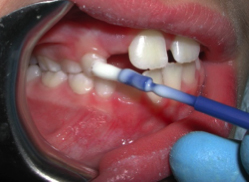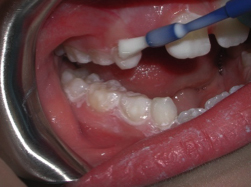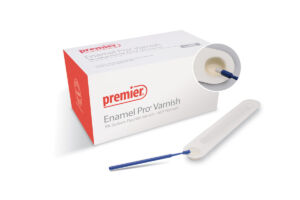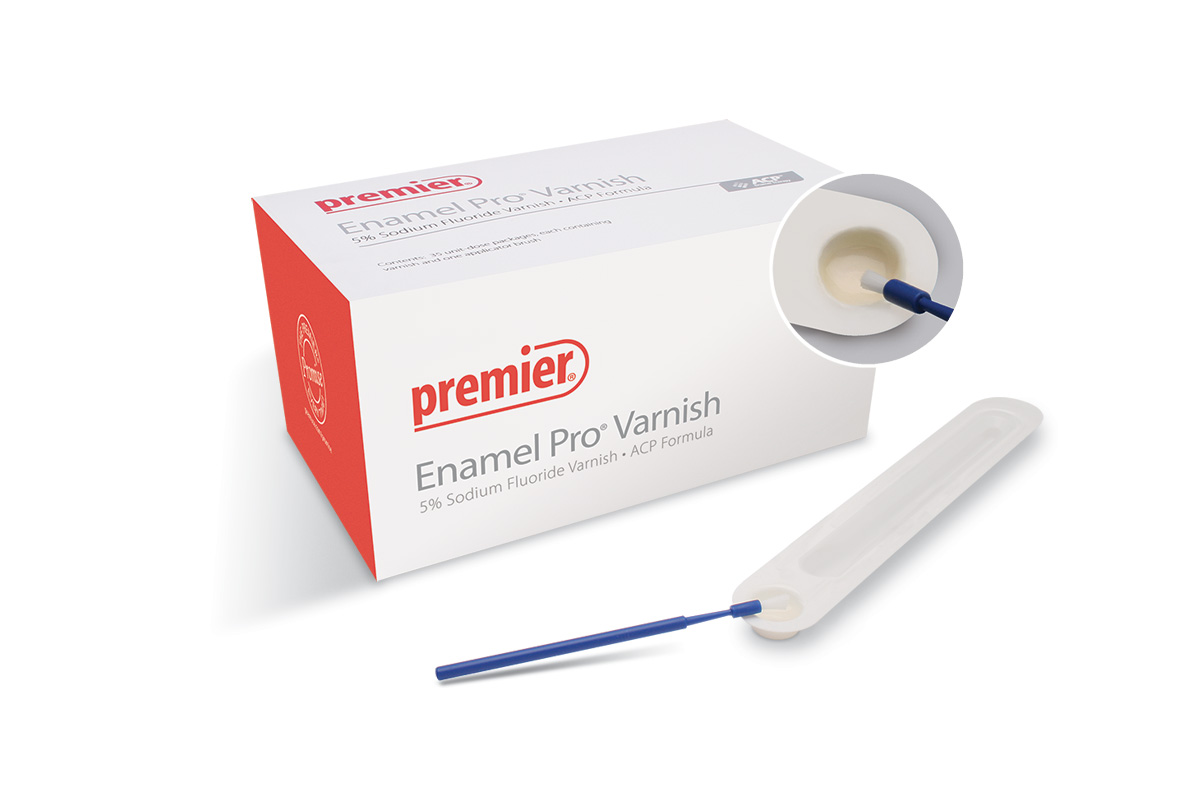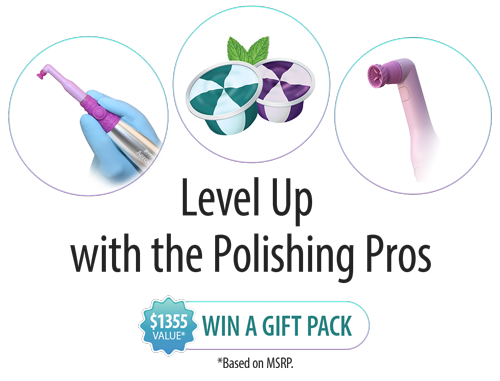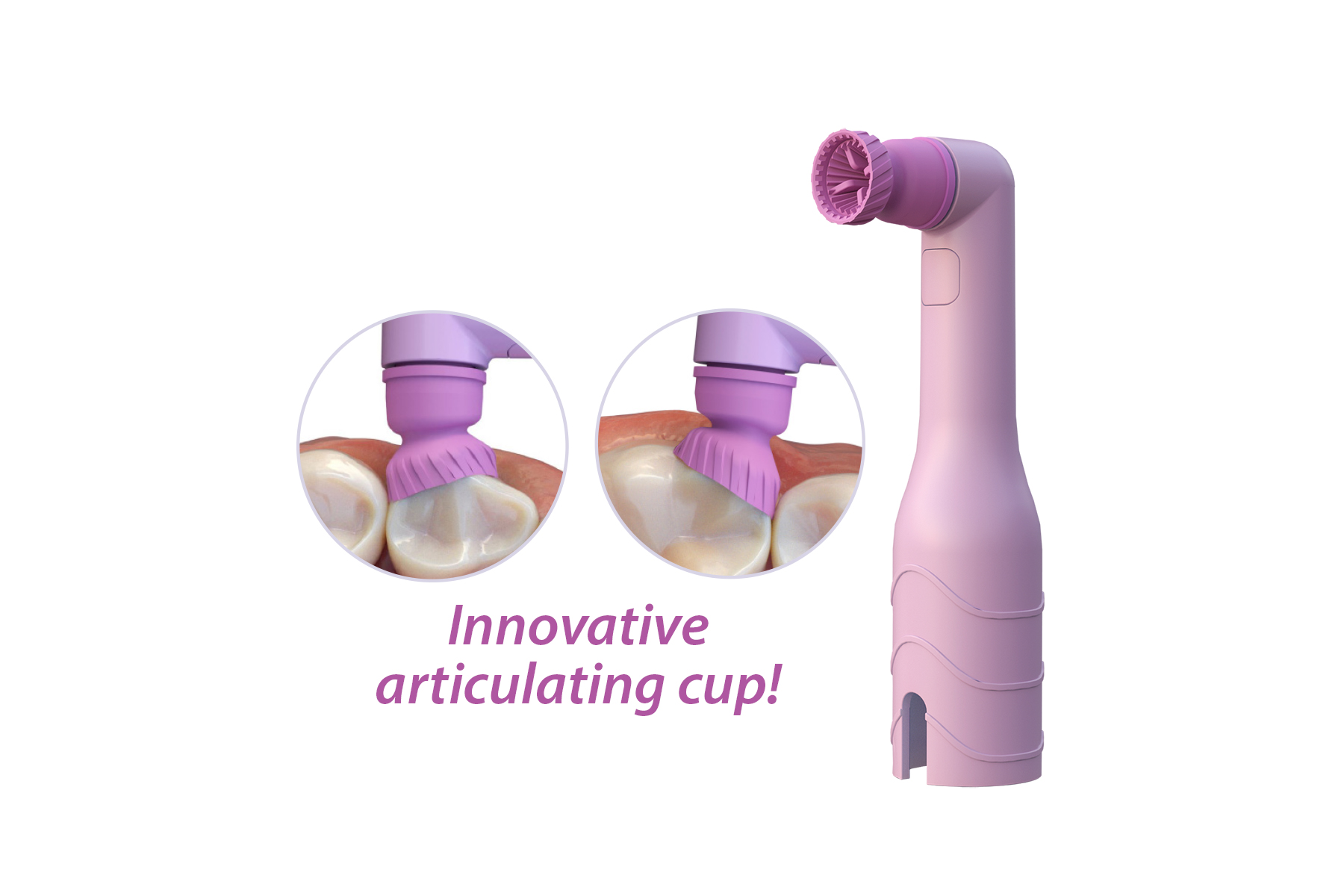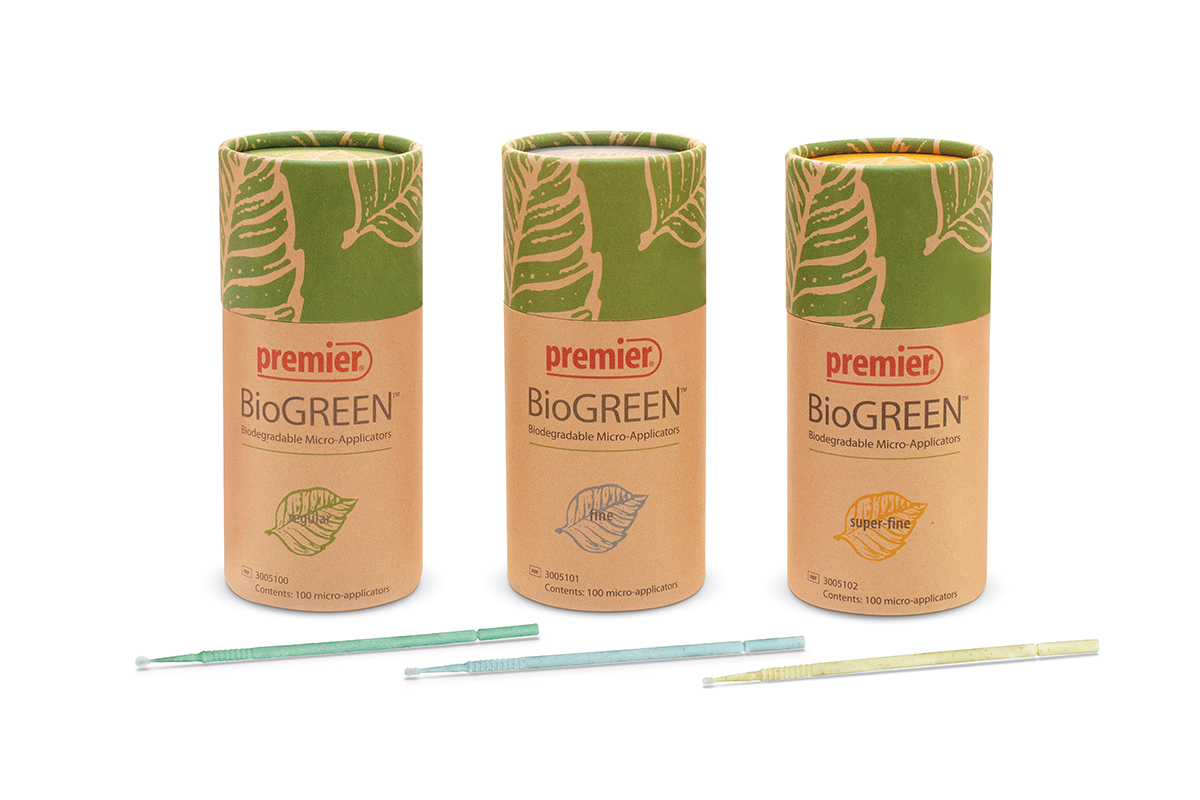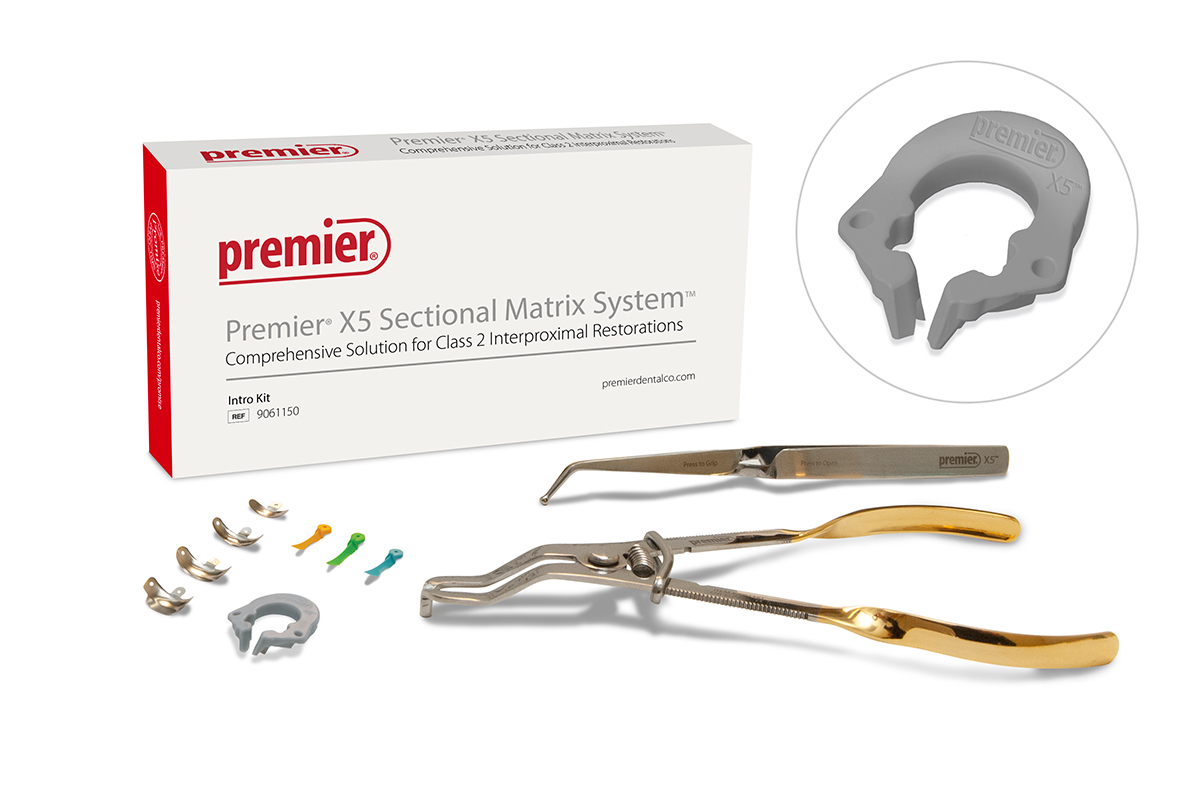by Jason H. Goodchild, DMD
It is commonly accepted that professionally applied fluoride varnish is an important component of caries management in children. The latest American Academy of Pediatric Dentistry (AAPD) Policy on Fluoride “encourages the application of professional fluoride treatments for all individuals at risk for dental caries” and the current American Dental Association (ADA) Executive Summary from 2013 is “in favor” of fluoride varnish application for children up to 18 years of age at risk for caries.1,2
Using the current ADA Caries Risk Assessment Tools for children 0-6 and >6 years of age, individuals with evidence of previous carious lesions, new carious lesions, teeth lost due to caries, visible plaque, and the presence of orthodontic appliances are some of the reasons for a moderate-high caries risk.3,4 In these patients applications of fluoride varnish typically occur on six month intervals to coincide with a dental prophylaxis and oral exam.
But is this the best way to utilize fluoride varnish to help prevent caries, white spots, and hypersensitivity?
Again from the ADA Executive Summary, for people who are at an elevated risk of developing dental caries… 2.26 percent fluoride varnish [5% NaF] should be applied at least every three to six months.”1 This means that for children with moderate-high caries risk, 2-4 applications of fluoride varnish are recommended.
A study by Seppa looked at the difference in remineralization between a single application and multiple applications of two concentrations of fluoride varnish (1.1% vs. 2.3%; one treatment vs. 3 treatments within 7 days).5 The results indicated that applications of fluoride varnish regardless of concentration prevented demineralization, however the enamel treated three times with 2.3% varnish showed the greatest acid resistance. This data suggests that multiple applications of 2.3% fluoride varnish for high-extreme caries risk patients may be more effective than a single application (extreme risk = high risk + dry mouth or special needs).6
Clinically, how should multiple fluoride varnish applications be accomplished? After a prophylaxis, each time?
It seems reasonable that administering a fluoride varnish treatment after a prophylaxis to remove the pellicle, plaque, and any calculus should be most effective. However, multiple in vivo studies have measured the uptake of fluoride by cleaned and uncleaned enamel. In two studies, the fluoride uptake was similar for cleaned vs. uncleaned7,8 one study showed higher uptake following cleaning9, and one study showed that the presence of plaque on uncleaned teeth enhanced the fluoride uptake.10 In other studies, there was no difference shown in DMFS increments when patients had prophylaxis and topical fluoride, self-brush and topical fluoride, or just topical fluoride with no pre-cleaning.11–14 Ripa eloquently summarized these studies, “Although the prophylaxis/topical fluoride treatment has been a time honored sequence in clinical dentistry, enough recent laboratory and clinical evidence exists to recommend the elimination of the prior prophylaxis as a routine procedure when professional topical fluoride applications are performed.”15
In practice, for a patient determined to be at a moderate or greater risk for caries they could receive the first application of fluoride varnish following prophylaxis and exam. For the next two applications, patients could simply visit the office and receive the fluoride varnish treatment without the need for a preceding hygiene procedure (in the presence of heavy deposits or debris, asking the patient to brush before varnish application may be advisable).
Why should I consider Enamel Pro® 5% NaF Varnish?
Enamel Pro® Varnish offers the fluoride concentration recommended by the ADA, 2.3%, with the added benefit of amorphous calcium phosphate technology (aka, ACP). It has been estimated that varnishes only remain active on the teeth for approximately 24 hours, so release of available ions should ideally be released during that time.16 In a study by Cochrane, Enamel Pro® fluoride varnish was shown to release high amounts of calcium and phosphate, and significantly more fluoride compared to other varnishes.17 In another study, Enamel Pro® fluoride varnish was applied to enamel adjacent to a demineralized area, and it was found that the ACP varnish promoted significantly more fluoride deposition into or onto sound and demineralized enamel compared to a competitor containing functionalized tricalcium phosphate.16
Enamel Pro® Varnish is easy to use and comes in three flavors (Strawberries ‘n Cream, Bubblegum, and VanillaMint):
Closing thoughts
Fluoride varnish can be an effective tool in a caries management protocol, and maximizing the effectiveness of that tool can mean better outcomes for our patients. In addition to patient education, oral hygiene, and routine care, choosing the right fluoride treatment and using it effectively is key to maximizing clinical benefit. After determining the patient’s caries risk, consider Enamel Pro® Varnish at the proper interval for caries prevention.
Learn more about Enamel Pro® Varnish at www.premierdentalco.com or call 888-773-6872 to speak to a customer service representative.
Acknowledgement: Clinical imagery and case examples courtesy of Dr. Shalom Mehler.


